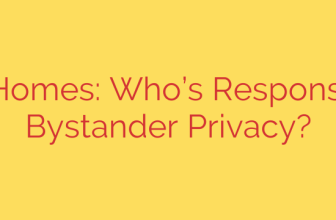
Securing Your JavaScript Dependencies: A New Approach to NPM Security
The command npm install is one of the most frequently used tools in a modern developer’s arsenal. With a single line, you can pull in thousands of packages and millions of lines of code, accelerating development at an incredible pace. But this convenience comes with a hidden cost: a significant and growing security risk to your software supply chain.
The open and accessible nature of the npm registry, while a catalyst for innovation, has also made it a prime target for malicious actors. Every dependency you add to your package.json is a potential entry point for malware. It’s time to move beyond reactive scanning and adopt a proactive approach to securing our JavaScript projects.
The Growing Threat in the Node.js Ecosystem
The scale of the npm registry is staggering, hosting millions of packages. Unfortunately, this vastness provides camouflage for a variety of sophisticated attacks that can compromise developer machines, CI/CD pipelines, and even production servers.
Understanding these threats is the first step toward building a robust defense:
- Typosquatting and Brandsquatting: Attackers publish malicious packages with names that are common misspellings of popular libraries (e.g.,
expresssinstead ofexpress). A simple typo can lead to a developer unknowingly installing malware designed to steal environment variables, API keys, or cryptocurrency wallets. - Dependency Confusion: This attack targets internal company systems. An attacker identifies the names of private, internal packages and publishes a malicious public package with the same name but a higher version number. Build tools may then “confuse” the two and pull the malicious public version instead of the trusted internal one.
- Protestware and Malicious Maintainers: In some cases, the maintainers of legitimate, popular packages have intentionally introduced malicious or destructive code. This can be a form of protest or a deliberate act of sabotage, compromising the thousands of projects that depend on their code. Trusting a package is not just about the code itself, but also the individuals and processes behind it.
These attacks highlight a fundamental flaw in the traditional model: we often place blind trust in a vast, interconnected web of code written by countless unknown developers.
A Proactive Solution: Verifiably Secure Dependencies
Instead of waiting to detect a vulnerability after it’s already in your system, a more secure method is to ensure packages are clean before they are ever installed. This is now possible through a new generation of security-focused package management that relies on verifiable, reproducible builds.
The core idea is simple but powerful: popular open-source JavaScript libraries are built from source code in a secure, isolated, and ephemeral environment. This process guarantees that the resulting package is free from malware introduced during a typical, less-secure build process on a developer’s machine.
This approach incorporates several critical security layers:
- Secure, Reproducible Builds: Each package is compiled and packaged in a hermetically sealed environment. This ensures that the process is consistent and prevents the injection of malicious code that could compromise the final artifact.
- Software Bill of Materials (SBOM): A detailed SBOM is generated for every package. This acts as a comprehensive “ingredients list” for your software, providing full transparency into every component, its source, and its version. This visibility is crucial for security audits and compliance.
- Cryptographic Signatures: Every package is cryptographically signed using standards like Sigstore. These signatures allow you to verify the integrity and origin of the package, ensuring it hasn’t been tampered with since it was created in the secure build environment.
By adopting packages built with these principles, development teams can dramatically reduce their exposure to supply chain attacks.
Actionable Steps to Protect Your JavaScript Projects
While using verifiably clean packages is a major step forward, it should be part of a broader security strategy. Here are essential best practices every development team should implement:
- Always Use a Lockfile: Files like
package-lock.jsonoryarn.lockare critical for security. They “lock” the specific versions of your dependencies, preventing unexpected or malicious updates from being automatically pulled into your project. Always commit your lockfile to source control. - Regularly Audit Your Dependencies: Utilize built-in tools like
npm auditto scan your project for known vulnerabilities. Integrating automated security scanners from providers like Snyk or Dependabot into your CI/CD pipeline provides continuous monitoring. - Vet New Dependencies Carefully: Before adding a new package, do your due diligence. Check its popularity on npm, its maintenance history on GitHub, the number of open issues, and its overall community reputation. A seemingly abandoned or suspicious package is a major red flag.
- Explore Secure Package Registries: For critical applications, consider using private registries or security-focused sources that provide pre-vetted, signed, and malware-free versions of common open-source packages. This shifts the burden of verification from your team to a trusted security provider.
The convenience of npm install isn’t going away, but our approach to using it must evolve. By understanding the risks and embracing proactive security measures like verifiable dependencies and diligent auditing, we can build faster and safer, securing our code from the ground up.
Source: https://www.helpnetsecurity.com/2025/09/25/chainguard-libraries-for-javascript/








